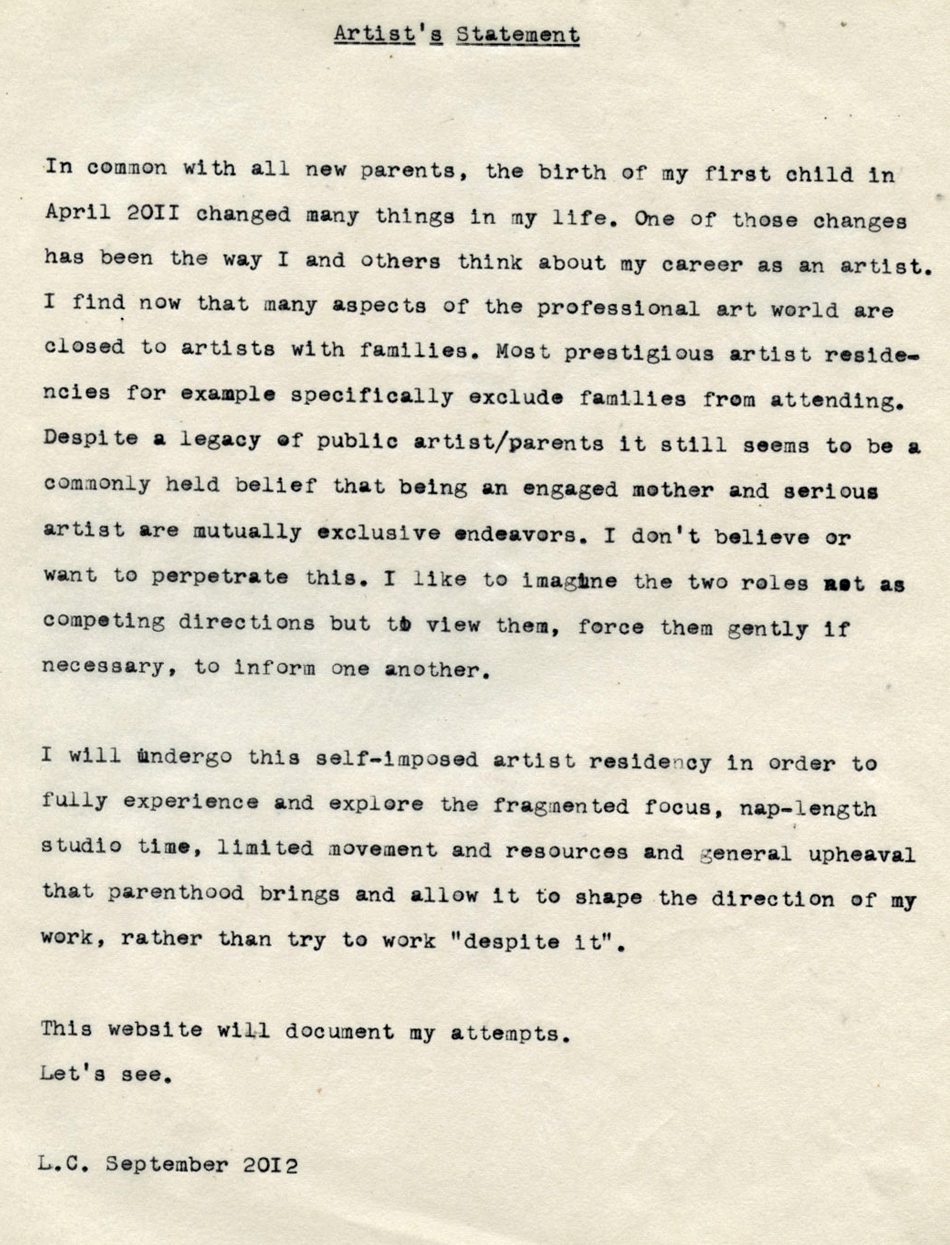To better reconcile parenthood and her art practice, Lenka Clayton created a residency for mothers. An interview with the interdisciplinary artist.
Pittsburgh-based interdisciplinary artist Lenka Clayton is the fourth artist we talked to about motherhood in our interview series inspired by the comprehensive retrospective of the work of Paula Modersohn-Becker. Also taking part are: Hannah Cooke, Najja Moore, Clarity Haynes, and Laxmi Hussain.
Clayton’s work considers, exaggerates, and alters the accepted rules of everyday life from reconstituting a lost museum to creating an at home residency for mothers. Her work has been exhibited internationally and is part of the collections at The Metropolitan Museum of Art in New York, the Kunsthalle Hamburg, and SFMoma, among others.

Lenka, could you tell us a bit about your project “An Artist Residency in Motherhood” and your art practice in general?
“An Artist Residency in Motherhood” (ARiM) is a project that grew out of my interdisciplinary art practice, as a way to continue working publicly and powerfully when I had my kids. I realized that many structures that had been important in my own professional world – for example the artist residency – were no longer open to me as the main caregiver of two young children. So, I decided instead to implement all of the usual supports of an artist residency into my life at home. This would enable me to claim the space of early parenthood as a productive site of creative engagement, rather than a situation that “stopped” me being able to work. To begin the residency, I wrote a manifesto for myself, set up a website to share my work, applied for a grant to fund two mornings a week of childcare, appointed friends as mentors, and began working in the bits of time where my children were sleeping.
I worked through the frame of ARiM for three years and made 32 works. During this time, I regularly received emails from people asking how they could apply to become artists in residence in motherhood. On Mother’s Day 2016, I published a website, artistresidencyinmotherhood.com, that shares a blueprint to guide any parent, anywhere in the world, to create their own unique residency within their own home and circumstances. There are currently over 1,200 Artists in Residence in Motherhood in all 50 US states, and in 72 countries around the world.
I continue to run ARiM as a part of my art practice, and act as an individual mentor to artists. I also work on solo and collaborative projects out of my studio in Pittsburgh, Pennsylvania. Some current projects include the construction of a full-size working lighthouse inside a dilapidated row house, an 8-foot-tall bronze historic plaque, a film about the story of a rock filmed entirely in an archive, and an encyclopedic sung record of all the choirs in a single city. I also co-run a gallery space with my husband, artist Phillip Andrew Lewis, called Gallery Closed.

Lenka Clayton, Artist Residency in Motherhood, 2021-2015, Image via www.lenkaclayton.com
Turning parental leave into productive, creative time that everyone can put together flexibly and adjust to their own personal needs and space is absolute genius! How does motherhood as a topic influence your work?
Personally, I am less interested in motherhood as a topic, but fascinated by it as a site, experience, and set of conditions that influence everything, including the way I think about my work as an artist. Being a parent continues to teach me about adaptability, gratitude, and the feeling of being in a state of collective work, shared by a majority of humans throughout time and geography. I love occupying this shared space.
Motherhood as a site? That is such an interesting perspective! Is motherhood – getting pregnant, giving birth, having children – still a taboo topic in the arts today?
11 years ago, when I was first pregnant, I would google “artist mother” and find nothing except Mary Kelly’s Post-Partum Document, an artwork made before I was born. It was incredibly disheartening to see how invisible motherhood was among artists. It became important to me to not only find a way to continue making work despite being a parent in the US where there is absolutely no governmental or social support for parents, but to do that work publicly, and share the fact that I am an artist with children. Women are regularly told to erase the story of their families in the quest of “professionalism”, which in many cases means that they become left out of their own profession and become invisible. There continue to be messages sent out from all sides, including from well-known artists without children, that being an artist OR a mother is a decision that a woman has to make if she is to make important work. I personally find these offensive, incorrect, and sexist. I have never heard of this message being told to a man. I work as publicly as possible to try to be a visible role model.
Agreed! These statements for example by Marina Abramović and Tracey Emin have come up in our other interviews in this series, as well. Has including motifs of motherhood changed the art world’s perspective of you as an artist?
You’d have to ask the art world, whatever that is.
Gotcha! Last question: When you think of motherhood in the arts who comes to mind, any artists you would like to give a shoutout to or that inspired you?
I absolutely love the work of Joey Fauerso, the photography of Corinne Botz, the work of Ruth Asawa, and the tenacity and dedication of all the Artists in Residence in Motherhood whose work can be explored on the world map.









